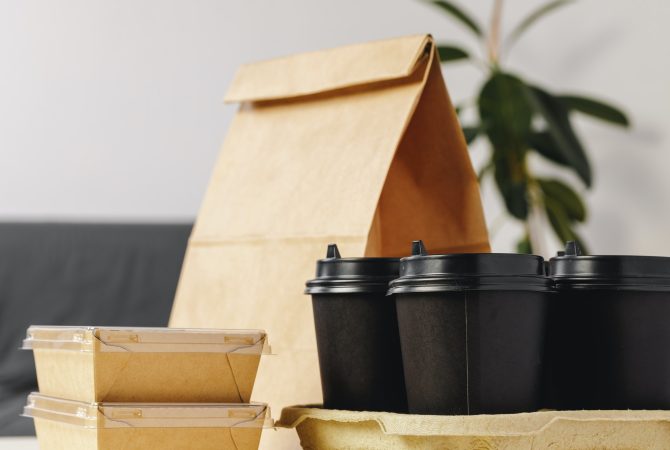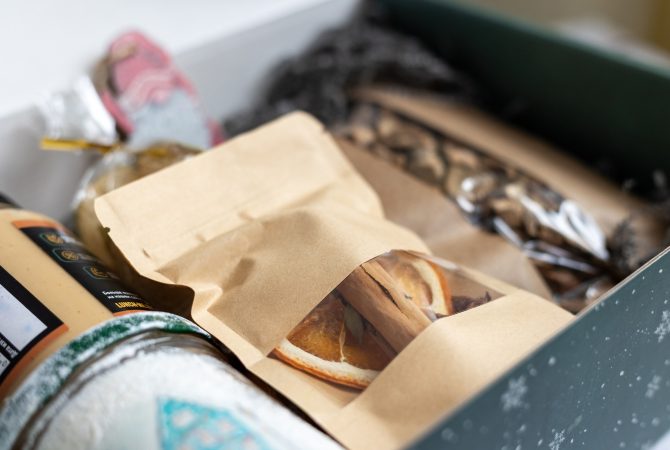Choosing the right materials for lid and base gift boxes determines whether your packaging creates a premium impression or falls flat with customers.
High-quality lid and base boxes utilize rigid cardboard construction, premium paper finishes, sustainable FSC-approved materials, and specialized coatings that ensure durability, visual appeal, and brand protection for luxury packaging applications.
Understanding these material choices becomes crucial when creating packaging that reflects your brand’s quality standards. Moreover, the right materials directly impact customer perception and unboxing experiences that drive brand loyalty.
What Core Materials Create Durable Lid and Base Box Construction?
The foundation of any premium lid and base box lies in selecting materials that provide structural integrity and visual appeal.
Rigid cardboard ranging from 1200-2000gsm forms the structural base, while specialty paper stocks including art paper, kraft paper, and textured finishes create the exterior appearance that defines the luxury packaging experience.
Rigid Cardboard Foundation Systems
The structural integrity of lid and base boxes depends primarily on high-density cardboard that maintains shape under pressure. Additionally, manufacturers typically use gray board or chipboard with densities between 1200-2000 grams per square meter for optimal strength[^1]. Furthermore, this dense construction prevents crushing during shipping and storage.
Premium boxes often incorporate multiple layers of cardboard laminated together to achieve superior rigidity. Moreover, the thickness ranges from 2mm to 4mm depending on the intended use and weight capacity requirements. Therefore, heavier products require thicker cardboard construction to maintain structural integrity.
The cardboard core also provides excellent printing surfaces when properly prepared with primer coatings. Additionally, smooth surfaces ensure consistent color reproduction and sharp graphic details. Furthermore, quality cardboard maintains its shape even in varying humidity conditions.
Premium Paper Stock Applications
The exterior paper stock defines the visual and tactile experience of lid and base boxes. Additionally, manufacturers commonly use art paper with weights ranging from 157gsm to 300gsm for smooth, printable surfaces. Furthermore, these papers accept high-quality printing techniques including offset, digital, and screen printing.
Kraft paper options provide eco-friendly alternatives while maintaining durability and printability. Moreover, kraft papers offer natural textures that appeal to environmentally conscious consumers. Therefore, brands focusing on sustainability often choose kraft paper combinations.
Specialty textured papers including linen, canvas, and embossed finishes add premium tactile elements to packaging. Additionally, these textures create unique sensory experiences during handling. Furthermore, textured surfaces can hide fingerprints and minor scratches better than smooth finishes.
| Material Type | Weight Range | Primary Benefits | Best Applications |
|---|---|---|---|
| Art Paper | 157-300gsm | Smooth printing surface | High-end cosmetics, jewelry |
| Kraft Paper | 150-250gsm | Eco-friendly, natural texture | Organic products, artisanal goods |
| Textured Paper | 200-350gsm | Premium feel, scratch resistance | Luxury accessories, gifts |
| Specialty Finishes | Variable | Unique appearance | Limited editions, premium brands |
How Do Sustainable Materials Enhance Box Quality and Brand Image?
Environmental responsibility increasingly influences packaging material choices without compromising quality or aesthetics.
FSC-approved materials and eco-friendly adhesives enable brands to create premium lid and base boxes that meet sustainability goals while maintaining the structural integrity and visual appeal required for luxury packaging applications.
FSC-Certified Material Benefits
Forest Stewardship Council (FSC) certification ensures that cardboard and paper materials come from responsibly managed forests. Additionally, FSC-approved materials meet strict environmental and social standards throughout the supply chain[^2]. Furthermore, brands can confidently communicate their environmental commitments to consumers.
The quality of FSC-certified materials matches or exceeds conventional alternatives while providing additional marketing advantages. Moreover, environmentally conscious consumers increasingly prefer products packaged in sustainable materials. Therefore, FSC certification becomes a competitive differentiator in premium markets.
FSC materials also qualify for various green building certifications and corporate sustainability programs. Additionally, some regions offer tax incentives for businesses using certified sustainable packaging. Furthermore, FSC certification demonstrates long-term environmental stewardship to stakeholders.
Eco-Friendly Adhesive and Coating Options
Water-based adhesives replace traditional solvent-based options without compromising bond strength or durability. Additionally, these adhesives eliminate harmful chemical emissions during manufacturing and use. Furthermore, water-based systems facilitate easier recycling at end-of-life.
Soy-based inks provide vibrant colors while reducing environmental impact compared to petroleum-based alternatives[^3]. Moreover, soy inks offer better color reproduction and faster drying times. Therefore, premium printing quality improves while environmental benefits increase.
Biodegradable coatings protect surfaces without preventing recycling processes. Additionally, these coatings maintain water resistance and durability during normal use. Furthermore, eco-friendly coatings appeal to consumers seeking sustainable packaging options.
Why Choose White Boxes for Your Packaging Needs?
Color selection significantly impacts brand perception, product presentation, and marketing effectiveness in packaging design.
White boxes provide versatile branding opportunities, create clean premium aesthetics, enhance product visibility, and offer cost-effective printing solutions that work across diverse product categories and target markets.
Visual Impact and Brand Versatility
White packaging creates immediate associations with cleanliness, purity, and premium quality across cultural contexts. Additionally, white surfaces provide maximum contrast for colorful products, making contents appear more vibrant. Furthermore, white boxes photograph exceptionally well for social media and marketing materials.
The neutral nature of white packaging allows brands to change accent colors seasonally without requiring new packaging designs. Moreover, white backgrounds make logos and brand elements stand out clearly. Therefore, white boxes offer maximum flexibility for brand evolution and product line extensions.
White packaging also creates cohesive visual presentation when multiple products are displayed together. Additionally, white boxes stack attractively for retail displays and storage. Furthermore, the clean appearance appeals to consumers across demographic segments.
Cost-Effective Printing and Production Advantages
White base colors require fewer ink layers for achieving vibrant printed colors, reducing production costs and time. Additionally, simple spot color applications on white surfaces cost significantly less than full-color printing on colored substrates. Furthermore, white papers often cost less than specialty colored options.
The printing process on white surfaces achieves more predictable color results with fewer test runs and adjustments. Moreover, white packaging enables cost-effective foil stamping and embossing applications. Therefore, premium finishing techniques become more accessible on white substrates.
Quality control becomes easier with white packaging since color variations and printing defects are immediately visible. Additionally, white surfaces show dust and handling marks, encouraging careful production and shipping practices. Furthermore, consistent white appearance ensures uniform brand presentation across production runs.
Product Presentation and Photography Benefits
White boxes create ideal photography conditions for product marketing and e-commerce applications. Additionally, white backgrounds eliminate color cast issues that can affect product color accuracy in photos. Furthermore, white packaging requires minimal photo editing and color correction.
The clean aesthetic of white packaging allows products to be the focal point in marketing materials. Moreover, white boxes create elegant negative space that enhances design composition. Therefore, marketing photography becomes more effective and cost-efficient.
Social media sharing increases when packaging photographs well, and white boxes consistently produce shareable images. Additionally, customers are more likely to post unboxing experiences when packaging looks professional in photos. Furthermore, white packaging creates consistent brand presentation across user-generated content.
What Specialized Finishes Elevate Lid and Base Box Quality?
Premium finishes transform basic packaging into memorable brand experiences that justify higher price points and create customer loyalty.
Specialized finishes including UV coating, embossing, foil stamping, and soft-touch lamination add tactile and visual elements that enhance perceived value while providing functional benefits like protection and durability.
Premium Coating Applications
UV coating creates high-gloss surfaces that protect printing while enhancing color vibrancy and visual impact. Additionally, selective UV coating highlights specific design elements like logos or product names. Furthermore, UV coatings provide scratch resistance that maintains appearance during handling and shipping.
Matte coatings offer sophisticated appearances that feel premium while reducing fingerprint visibility. Moreover, matte finishes create elegant contrast when combined with glossy elements in the same design. Therefore, mixed coating applications add visual depth and interest.
Soft-touch coatings create velvet-like textures that enhance the tactile experience of handling packaging. Additionally, these coatings provide subtle luxury feelings that increase perceived value. Furthermore, soft-touch surfaces feel warm and inviting compared to standard paper finishes.
Decorative Enhancement Techniques
Embossing creates raised design elements that add dimensional interest and premium tactile experiences. Additionally, debossing creates recessed areas that provide subtle elegance and sophisticated appearance. Furthermore, combination embossing and debossing techniques create complex textural patterns.
Foil stamping adds metallic accents that catch light and create luxury associations. Moreover, holographic foils provide security features while enhancing visual appeal. Therefore, foil applications serve both decorative and functional purposes in premium packaging.
Hot stamping techniques enable precise application of metallic and colored foils to specific design areas. Additionally, cold foil applications provide cost-effective alternatives for larger coverage areas. Furthermore, combination foil and printing techniques create unique visual effects.
| Finish Type | Visual Effect | Tactile Experience | Cost Impact |
|---|---|---|---|
| UV Coating | High gloss, vibrant colors | Smooth, protected surface | Medium |
| Matte Coating | Sophisticated, elegant | Soft, non-reflective | Low-Medium |
| Embossing | Dimensional, premium | Raised texture | High |
| Foil Stamping | Metallic, luxury | Smooth metallic feel | High |
| Soft-Touch | Subtle elegance | Velvet-like texture | Medium-High |
How Do Quality Materials Impact Customer Experience and Brand Perception?
Material quality directly influences customer satisfaction, brand loyalty, and purchasing decisions in competitive markets.
Premium materials create positive unboxing experiences, enhance perceived product value, encourage social media sharing, and build brand credibility that translates into customer retention and word-of-mouth marketing.
Unboxing Experience Enhancement
The tactile quality of packaging materials creates immediate impressions that influence customer satisfaction before products are even revealed. Additionally, premium materials signal quality and care that extends to the product itself. Furthermore, high-quality packaging creates anticipation and excitement during the unboxing process.
Structural integrity ensures that boxes open smoothly without tearing or damage that could disappoint customers. Moreover, well-constructed packaging protects products during shipping, ensuring items arrive in perfect condition. Therefore, material quality directly impacts customer satisfaction metrics.
The weight and feel of premium packaging creates psychological associations with value and quality. Additionally, customers often judge product quality based on packaging quality during initial encounters. Furthermore, premium packaging materials justify higher price points and reduce price sensitivity.
Brand Credibility and Market Positioning
Consistent use of high-quality materials across packaging touchpoints reinforces brand positioning and market credibility. Additionally, premium materials demonstrate attention to detail that customers associate with product quality. Furthermore, quality packaging materials help brands compete effectively against established competitors.
Professional packaging materials enable brands to enter premium market segments where packaging quality is expected. Moreover, inferior materials can immediately disqualify brands from consideration in luxury categories. Therefore, material quality serves as a market entry requirement in many segments.
Investment in premium materials often pays dividends through increased customer lifetime value and referral rates. Additionally, quality packaging reduces customer service issues related to damaged products or poor presentation. Furthermore, premium materials create positive brand associations that extend beyond individual purchases.
Get Premium Finishing For Your Designs At OPACK
Looking for a reliable and nice price supplier? OPACK is your trusted partner for creating stunning designs that leave a lasting impression and add elegance and sophistication to your packaging. Contact us now to order.
Conclusion
High-quality lid and base boxes require premium materials, sustainable practices, and specialized finishes that create memorable experiences while reflecting brand values and market positioning.









